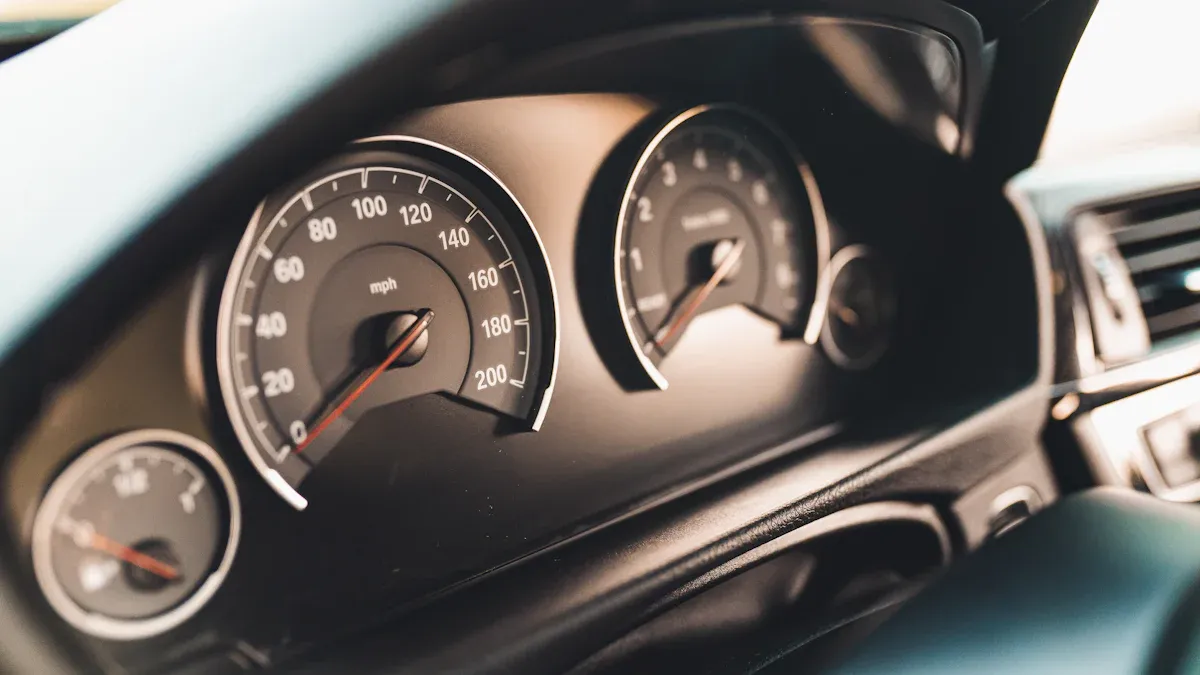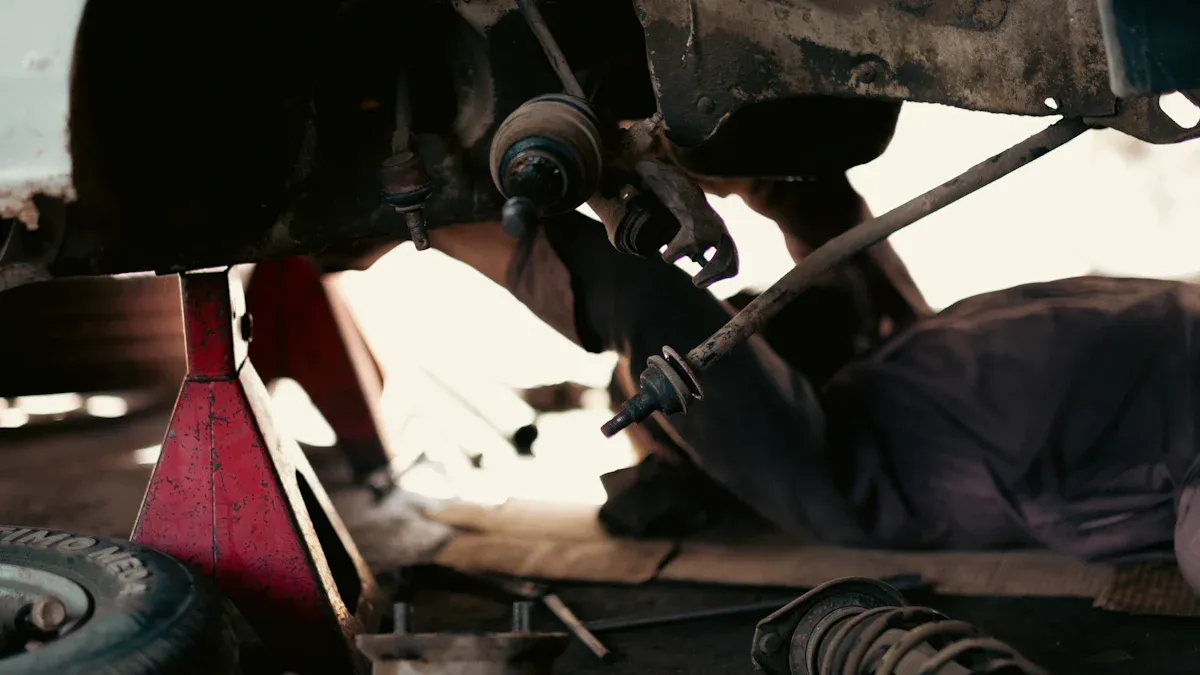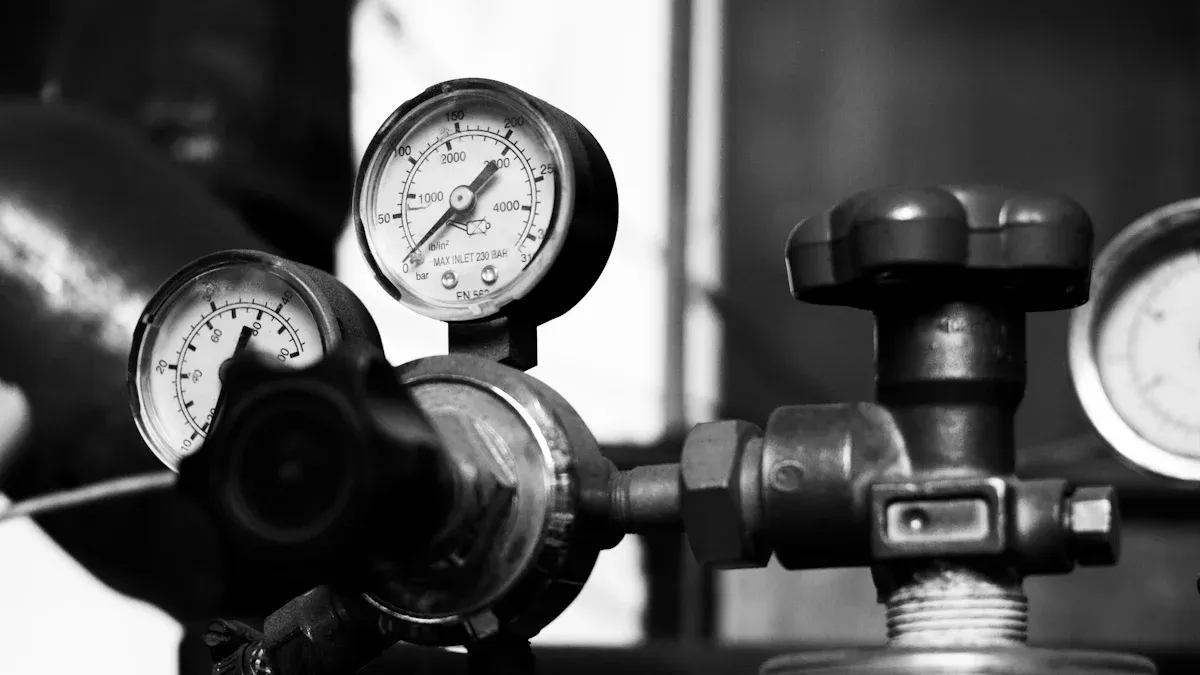
Tire tread depth is crucial for your safety and vehicle performance. Worn tires can lead to longer stopping distances, increasing your risk of accidents. In fact, studies show that tires with a tread depth of 2/32 of an inch sharply increase stopping distances, making regular assessments vital. A tire tread scanner can help you achieve accurate measurements, ensuring your tires are safe for the road. By checking your tread regularly, you can catch issues early and maintain better fuel efficiency, ultimately saving you money and enhancing your driving experience.
Belangrijke punten
Regularly check your tire tread depth to stay safe and improve vehicle performance.
Gebruik een bandenslijtage scanner for accurate, consistent measurements and to spot uneven wear early.
Calibrate your scanner before use to ensure reliable results and avoid errors.
Identify common tire wear patterns to detect alignment or inflation issues early.
Maintain proper tire pressure, rotate tires, and check alignment to extend tire life and save money.
Het belang van bandprofieldiepte

Veiligheidsimplicaties
Tire tread depth plays a vital role in your safety on the road. When your tires wear down to the legal minimum of 2/32 inches, you significantly increase your risk of accidents. Studies show that stopping distances can grow dramatically as tread depth decreases. For instance, at 2/32 inches, your stopping distance on wet roads can be up to 52% longer compared to new tires. This means that in an emergency, you might not stop in time, putting you and others at risk.
Tip: Regularly de profieldiepte van uw banden controleren. If you can see Lincoln’s head on a penny, it’s time to replace your tires!
Hier is een snelle blik op de recommended minimum tread depths according to automotive safety organizations:
Regio | Minimale loopdiepte |
|---|---|
United States | 2/32″ (1.6 mm) |
European Union (Passenger Vehicles) | 1.6 mm (1/16″) |
European Union (Commercial Vehicles) | 2 mm (0.079″) |
Prestaties en Brandstofefficiëntie
Tire tread depth also affects your vehicle’s performance and fuel efficiency. Deeper treads provide better grip, especially in wet conditions, which enhances your vehicle’s handling and braking capabilities. However, deeper treads can increase rolling resistance, leading to higher fuel consumption.
On the flip side, shallower treads may improve fuel efficiency by reducing rolling resistance. But beware! They can compromise traction, especially in adverse weather conditions.
To keep your tires in optimal condition, consider these points:
Maintain proper tire pressure.
Rotate your tires regularly.
Inspect tread depth frequently.
By balancing tread depth with performance needs, you can ensure a safer and more efficient driving experience. Remember, your tires are the only contact between your vehicle and the road, so keeping them in good shape is essential for both safety and efficiency!
Using a Tire Tread Scanner

Calibration and Setup
Before you start measuring tire tread depth, you need to calibrate your tire tread scanner. Proper calibration ensures accurate readings, so follow these steps:
Access the calibration option within the system settings of your device.
Follow the on-screen instructions to position the scanner correctly on the calibration platform. Make sure the magnetic head aligns with the magnetic area.
Press the measurement button to initiate the calibration process.
Once calibration is complete, confirm the process to return to the main settings interface.
Taking the time to calibrate your scanner will help you avoid errors and ensure that your measurements are reliable.
Measurement Techniques
Now that your tire tread scanner is calibrated, it’s time to measure the tread depth. There are several techniques you can use, each with its own advantages.
Laser-scantechnologie is one option. It works by emitting light onto the tire and capturing the reflected light to create 3D data. This method provides very accurate and quick measurements. However, it often requires dedicated devices and manual data entry, which can introduce errors.
On the other hand, mobile tire tread scanners have become increasingly popular. These devices use the camera of any standard mobile device combined with AI and computer vision to generate precise 3D models of the tread. This method achieves high accuracy, down to 0.3 mm, and is more affordable since it requires no dedicated hardware. Plus, you can instantly store and share your measurements digitally.
Here’s a quick comparison of different measurement techniques:
Measurement Technique | Nauwkeurigheid | Voordelen | Limitations |
|---|---|---|---|
Mobile Tire Tread Scanners | High accuracy (precision down to 0.3 mm or 1/64 inch) | Uses AI and computer vision to create 3D models; mobile; cost-effective; digital documentation and sharing | Requires some training; software cost involved |
Laser Scantechnologie | Hoge nauwkeurigheid | Provides 3D geometry of tire; fast measurement | Expensive dedicated devices; manual data entry prone to errors |
Handheld Tire Tread Scanners | Accurate and mobile | Fast, compact, automatic diagnosis and maintenance suggestions | Single-use; expensive; limited functionality |
Traditional Methods (Penny Test, Mechanical Gauges) | Less accurate | Simple and low cost | No digital documentation; less precise |
Using a tire tread scanner improves measurement consistency over traditional methods. These scanners provide highly accurate and consistent measurements across the entire tire circumference. They can detect irregular wear patterns that manual methods might miss. Plus, automatic measurement and reporting save you time and reduce manual labor.
With the advancements in technology, mobile tire tread scanners are now more accessible than ever. They allow you to perform quick, accurate, and consistent tread depth measurements, making your tire maintenance routine easier and more efficient.
Interpreting Tire Tread Scanner Results
Understanding Readings
When you use a tire tread scanner, understanding the readings is crucial for assessing your tires’ condition. Most scanners report tread depth in either inches or millimeters. For example, the Anyline mobile tire tread depth reader allows you to choose between these units, making it easy to get the measurements you need. The SmartSafe TTM113 Tire Tread Depth Examiner provides readings with an accuracy of 0.1 millimeters, which is quite precise.
To interpret the readings effectively, follow these steps:
Take multiple measurements around the tire to get an accurate average. This helps account for any uneven wear.
Press the tread gauge gently into the tread until it stops, ensuring the base rests on the tire surface.
Compare your readings to the tread wear bars. If your measurement is at or below these bars, it’s time to consider replacing the tire.
Measure all four tires, as they may wear differently due to various factors like alignment and driving habits.
Take readings when tires are cool and have not been driven on recently for the most accurate results.
Using these techniques will help you determine whether your tires are safe for the road. Remember, if you can see the top of Lincoln’s head on a penny, your tread depth is too low, indicating a need for replacement.
Identifying Wear Patterns
Tire tread scanners can also help you identify wear patterns that indicate underlying issues with your vehicle. Here are some common wear patterns to look out for:
Toe Wear: This occurs when there’s excessive wear along the outer or inner edge of the tire. It often results from alignment problems where the tires point inward or outward.
Camber slijtage: This type of wear happens on the outer or inner edge of the tire due to improper tilting. Like toe wear, it’s usually related to alignment issues.
Slijtage in het Midden: If you notice excessive wear in the center of the tire, it’s likely due to overinflation.
Slijtage aan de Randen: This pattern shows wear along both sides of the tire, typically caused by underinflation.
Cupping Tire Wear: Characterized by diagonal scalloping patterns, this wear often indicates worn suspension parts that fail to absorb road impacts.
Identifying these patterns early can prevent further damage to your vehicle’s suspension and improve safety. For instance, cupping or scalloping often points to worn shocks or misalignment, which can lead to a rough ride and increased repair costs.
By regularly using a tire tread scanner, you can catch these issues before they escalate. This proactive approach not only enhances your safety but also improves fuel efficiency and handling.
Maintenance Tips for Tire Longevity
Regelmatige Inspecties
Regular tire inspections are essential for keeping your tires in top shape. You should check your tires before and after every trip. This helps you assess their condition, tread depth, and air pressure. Additionally, aim for monthly inspections to catch any wear patterns or potential issues early. This routine not only promotes even tire wear but also extends the overall lifespan of your tires.
Here are some quick tips for effective inspections:
Look for visible damage: Check for cuts, punctures, or bulges.
Measure tread depth: Use a tire tread scanner or the penny test to ensure your tread is safe.
Inspect for uneven wear: Look for signs of wear on the edges or center of the tire.
Tip: Keeping a checklist for your tire inspections can help you stay organized and ensure you don’t miss anything important!
Proper Inflation and Alignment
Maintaining proper tire inflation is crucial for tire longevity. When your tires are overinflated, they wear more in the center, leading to uneven wear and a shorter lifespan. On the other hand, underinflated tires tend to wear more on the edges. To keep your tires in good condition, follow these guidelines:
Check tire pressure regularly: Use a tire pressure gauge to ensure your tires are inflated to the manufacturer’s recommended levels.
Adjust as needed: If you notice your tires are too high or too low, make adjustments immediately.
Misalignment can also cause uneven wear. When your wheels aren’t aligned correctly, they don’t make even contact with the road. This can lead to faster wear on specific edges. Here are some signs of misalignment to watch for:
Your vehicle pulls to one side.
The steering wheel feels off-center.
You notice vibrations while driving.
Regular alignment checks, ideally every 6,000 miles or more frequently on rough roads, can help prevent premature tire wear. By keeping your tires properly inflated and aligned, you’ll maximize their lifespan and improve your vehicle’s performance.
Remember, taking these simple steps can save you money in the long run and keep you safe on the road!
In summary, keeping an eye on your tire tread depth is essential for your safety and vehicle performance. Using a tire tread scanner offers you accurate measurements that can help you detect worn or uneven tread early. This proactive approach not only enhances safety but also saves you money by extending tire life and improving fuel efficiency.
Make tire tread assessments a regular part of your vehicle care routine. By doing so, you’ll ensure a smoother ride and reduce the risk of accidents. Remember, your tires are your vehicle’s only contact with the road, so give them the attention they deserve!
Tip: Regularly check your tire tread depth to stay safe on the road!
Veelgestelde vragen
What is the ideal tread depth for my tires?
The ideal tread depth varies by region. In the U.S., the minimum is 2/32 inches. However, for optimal safety, aim for at least 4/32 inches, especially in wet conditions.
Hoe vaak moet ik mijn bandprofiel controleren?
You should check your tire tread at least once a month. Additionally, inspect them before long trips or when you notice changes in handling or performance.
Can I use a tire tread scanner on any tire type?
Yes, most bandenprofielscanners work on various tire types, including passenger, SUV, and light truck tires. Just ensure the scanner is compatible with your specific model.
What should I do if my tread depth is too low?
If your tread depth is below the recommended level, replace your tires immediately. Worn tires can compromise safety and performance, especially in wet or slippery conditions.
How can I extend the life of my tires?
To extend tire life, maintain proper inflation, rotate your tires regularly, and align them as needed. Regular inspections can also help catch issues early, preventing premature wear.
Zie ook
Step-By-Step Guide To Measuring Tire Tread Depth Precisely
Understanding Smart Tire Tread Depth Sensors And Their Function
Het belang van regelmatige bandprofielcontroles voor de veiligheid






